A Cosmic Ballet: Unveiling the Intricate Dance of the M81 Galaxy Group
Just how faint of detail can the DWARF 3 capture of this remarkable group? The results will surprise you, they did me!
Welcome, space and astrophotography enthusiasts, to DwarfVision D3. In this article, we're embarking on a journey to a fascinating corner of the universe—the M81 galaxy group. Read along or listen to this Audio-Enhanced Article.
Gravity orchestrates a truly spectacular cosmic ballet in this corner of the cosmos. Let's explore the M81 galaxy group.
Gravity’s Dance
Imagine a gathering of galaxies, bound together in a delicate dance, some 12 million light-years away in the constellation Ursa Major, the Great Bear. This is the M81 Group – a galactic neighborhood teeming with activity, where interactions between galaxies shape their destinies.
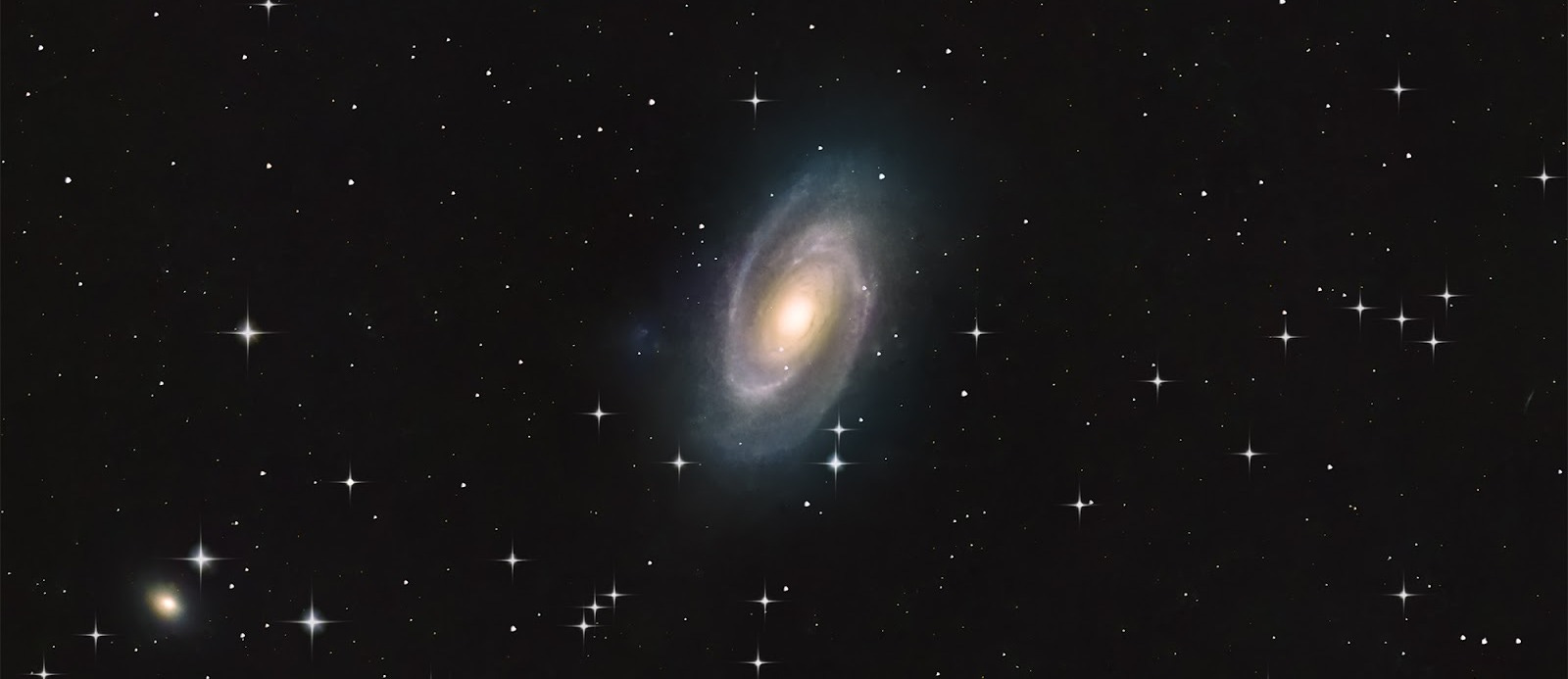
M81, also known as Bode's Galaxy, is at the heart of this cosmic dance. This is the star of the show, a "grand design" spiral galaxy in every sense of the word. It's big, it's beautiful, and its structure is incredibly well-organized. Picture swirling arms of stars, dust, and gas gracefully circling a bright, yellowish core. That yellowish hue? It's the signature of older stars, concentrated in the galaxy's center. M81 is the gravitational heavyweight of the group, its influence dictating the movements of its companions.
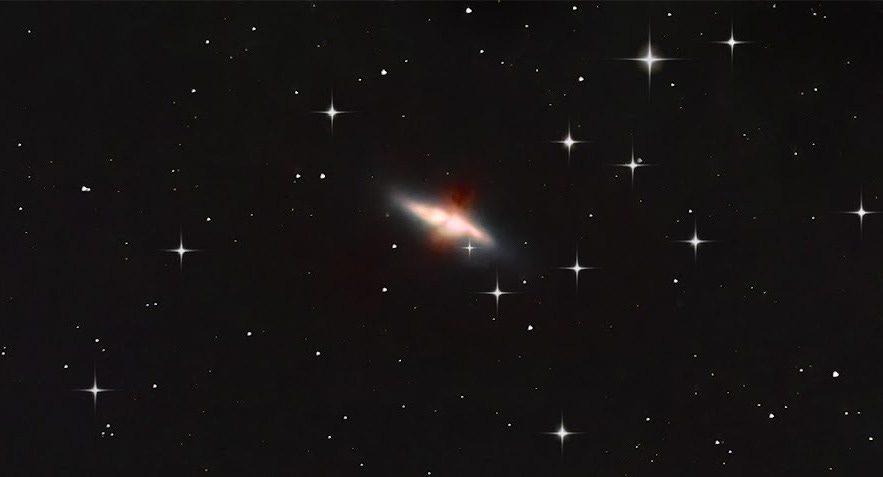
Visually near M81, we find M82, the Cigar Galaxy. But unlike M81's elegant spirals, M82 is a chaotic wonder. It's a starburst galaxy where stars are being born at an astonishing rate. A close encounter with M81 triggered this frenzy of star formation. This gravitational tug-of-war has warped M82's shape, giving it its characteristic elongated, cigar-like appearance. This activity is so intense that powerful stellar winds and supernova explosions are flinging gas and dust out of the galaxy and into space. You can see this outpouring of gases in many astrophotos of this irregular galaxy.
Then there's NGC 3077, a smaller dwarf galaxy that also feels the effects of M81's gravity. It's not as dramatically distorted as M82. Still, its shape is irregular, with pockets of star formation sparked by the gravitational interaction with M81.
And we can't forget the fainter members. Holmberg IX is an extremely faint dwarf galaxy. It is a proper satellite of M81, but it is being tidally stripped—literally pulled apart by M81's gravity—leaving it as a mere diffuse smudge just off the limb of M81.
The M81 Group is a living textbook example of galactic interactions. M81's massive gravity pulls and affects its companions, causing M82's starburst, distorting NGC 3077, and slowly devouring Holmberg IX. These interactions aren't just destructive; they trigger star formation, redistribute matter, and ultimately shape the evolution of each galaxy.
Views from Space
The sharpest image of the large "grand design" spiral galaxy M81 as released by the American Astronomical Society Meeting in Honolulu, Hawaii. A spiral-shaped system of stars, dust, and gas clouds, the galaxy's arms wind down into the nucleus. Though the galaxy is located 11.6 million light-years away, the Hubble Space Telescope's view is so sharp that it can resolve individual stars, along with open star clusters, globular star clusters, and even glowing regions of fluorescent gas. The Advanced Camera for Surveys took the Hubble data from 2004 through 2006. This color composite was assembled from blue, visible, and infrared images.
Credit:NASA, ESA and the Hubble Heritage Team (STScI/AURA). Acknowledgment: A. Zezas and J. Huchra (Harvard-Smithsonian Center for Astrophysics)
This mosaic image of the magnificent starburst galaxy, Messier 82 (M82) is the sharpest wide-angle view ever obtained of M82. It is a galaxy remarkable for its webs of shredded clouds and flame-like plumes of glowing hydrogen blasting out from its central regions, where young stars are being born 10 times faster than they are inside in our Milky Way Galaxy.
Credit:NASA, ESA and the Hubble Heritage Team (STScI/AURA). Acknowledgment: J. Gallagher (University of Wisconsin), M. Mountain (STScI) and P. Puxley (NSF).
So, the next time you look up at the night sky and find the great bear or "big dipper," remember the M81 Group – a testament to our universe's dynamic and ever-evolving nature.
Stop the presses! I spotted something incredible during my 3+ hour astro-filter stack of M81. At first, I thought the background gradient I was seeing was just noise that the D3 sometimes captures, such as when a touch of cloud slides by during capture, but upon examining my stack compared to other images on Astrobin, I realized that what I had captured was the Integrated Flux Nebula (IFN), not an earthly cloud! Incredibly, my D3 could pick up this very faint nebulosity in a long exposure.
To highlight the details even more in this black-and-white version, I contrasted dramatically the IFN region in Photoshop. I selected away the galaxies so as not to burn them out. This approach beautifully showcases the IFN while keeping the galaxies crisp.
This ethereal, faint nebulosity that permeates the background is a ghostly reminder that we are viewing these distant galaxies through the diffuse dust and gas of our Milky Way's halo. The IFN, illuminated by the collective starlight of our galaxy, nicely contrasts with the sharp details of the more distant galaxies.
Thank you for reading, please use the buttons below to ask me questions!


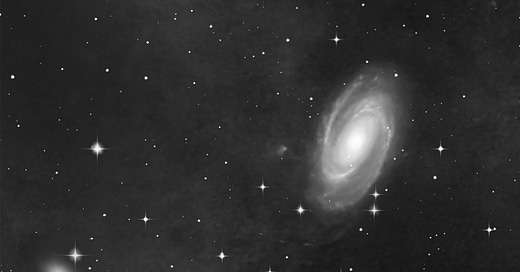


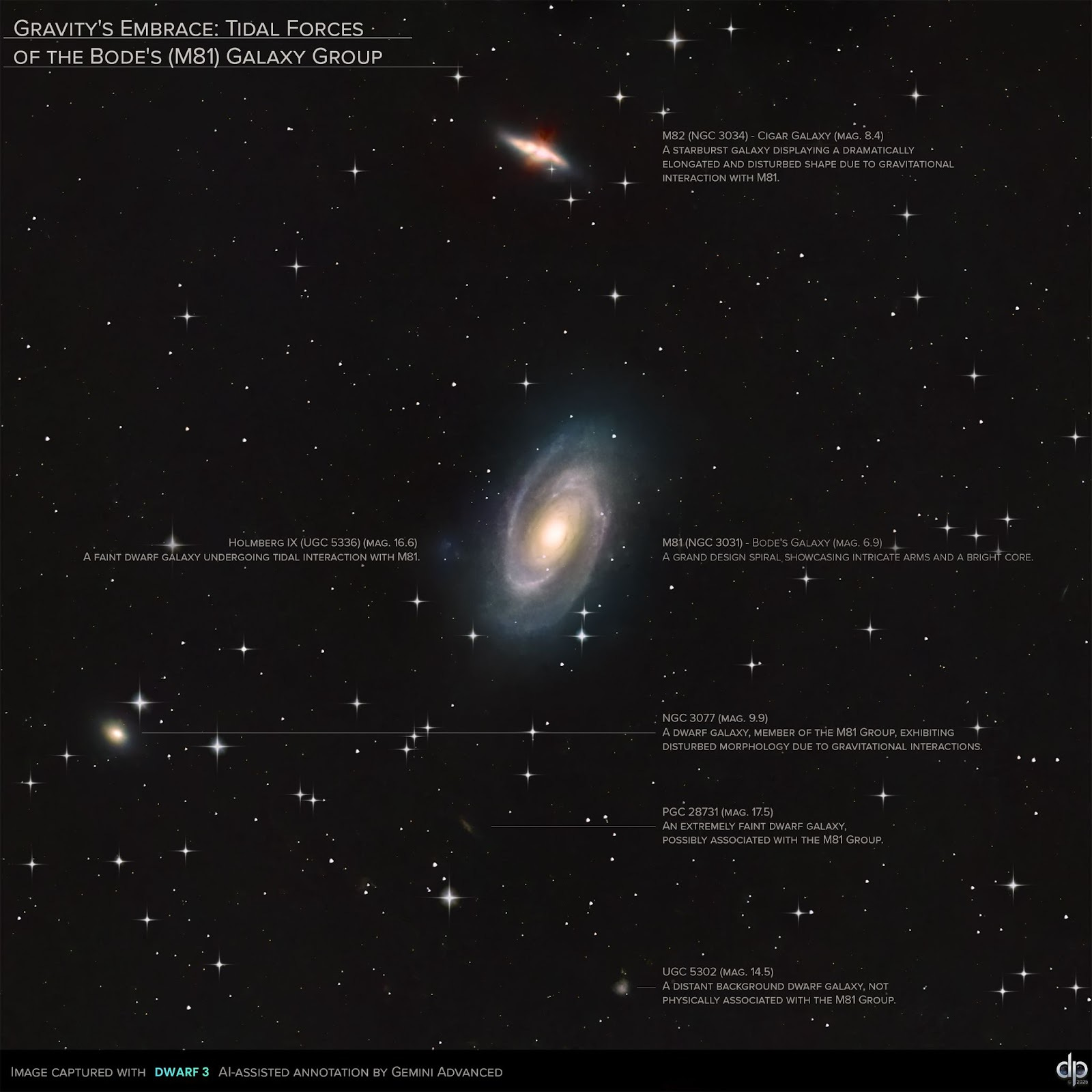
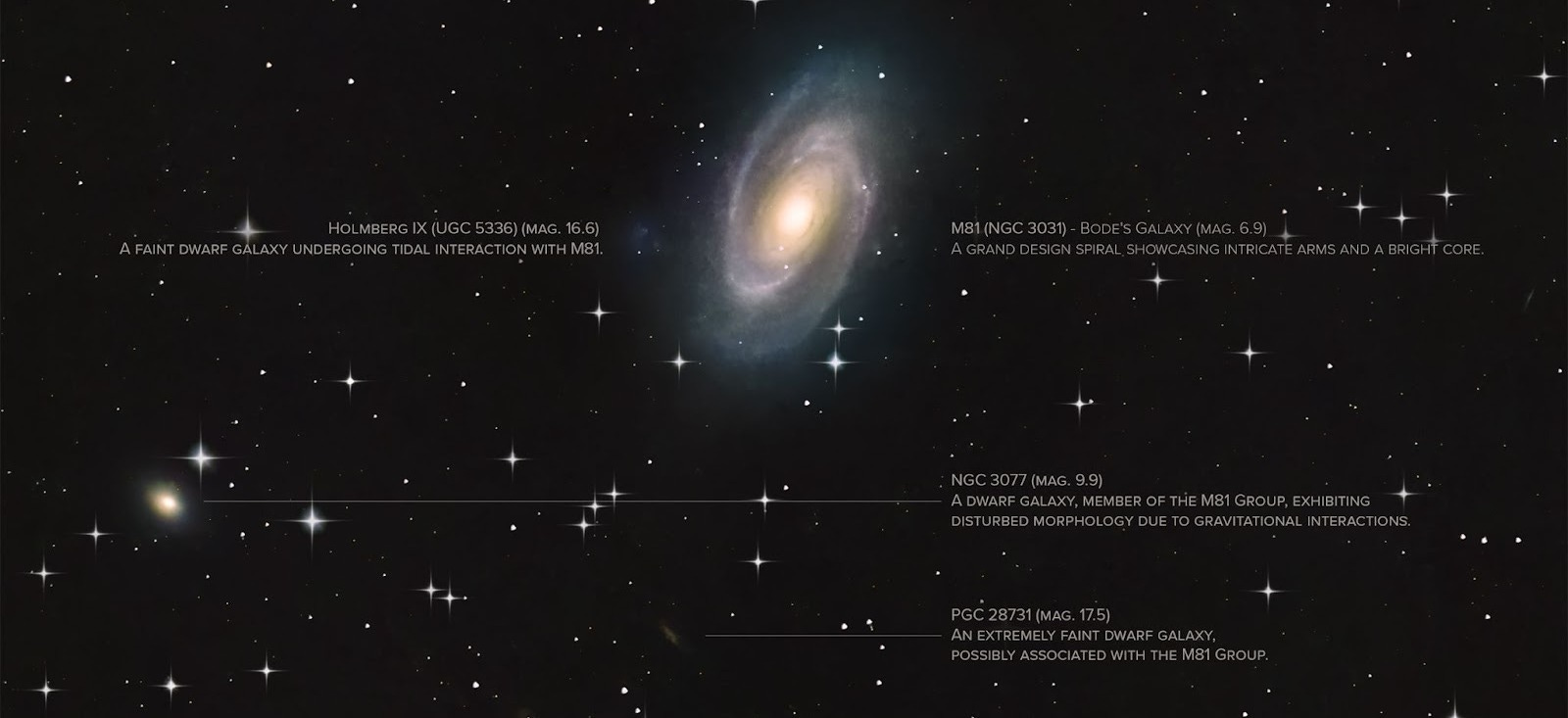




Absolutely captivating presentation and voice rendition...love it